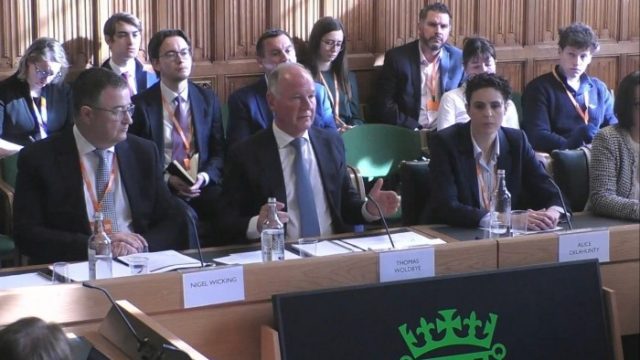Unlock the Editor’s Digest for free
Roula Khalaf, Editor of the FT, selects her favourite stories in this weekly newsletter.
Airlines warned Heathrow airport about concerns over the resilience of its electricity supply days before a power outage caused the closure of the UK’s busiest airport and hundreds of cancelled flights, MPs have heard.
Heathrow closed on March 21 after a massive fire at a nearby electricity substation caused a power cut at the airport, leading to the cancellation of more than 1,300 flights. The airport did not fully reopen for more than 24 hours.
“I’d actually warned Heathrow of concerns we had with regard to the substations, my concern was resilience,” Nigel Wicking, chief executive of Heathrow AOC, which represents airlines that use the airport, told the Transport select committee on Wednesday.
Wicking told MPs he had first raised his concerns on March 15, following “a couple of incidents of theft of wire and cable around some of the power supply that on one occasion took out a runway for a period of time”.
Heathrow said the incident “had no relation” to the later outage that led to its closure, and did not involve the main power supplies coming into the airport from three substations.
“This issue related to a minor substation, of which there are 250 at the airport. We were well aware of that incident before Mr Wicking raised it. Our contingencies were stood up and the incident was resolved quickly,” the airport said.
Thomas Woldbye, chief executive of Heathrow, apologised for the disruption to airlines and passengers. “The situation was unprecedented and we recognise the considerable concern and inconvenience it caused,” he said.
Woldbye insisted the airport had no choice but to close on safety grounds, but said the airport would review whether it could have reopened some terminals more quickly.
“I am absolutely committed to making sure we learn from this,” he added.
Wicking said he believed Terminal 5, home of British Airways at Heathrow, could have opened more quickly.
National Grid, which operates the UK’s high-voltage transmission network, said power had always been available to the airport from two other nearby substations, which were unaffected by the blaze.
The delay in reopening the airport was caused by Heathrow’s engineers having to reconfigure its power supply to take electricity from the other two substations, which took about 10 hours, Woldbye said.
He said Heathrow paid £135mn per year for its power, and that it “is supposed to be resilient.
“As a customer of the power companies we need to be able to rely on the contracts we make.”
Scottish and Southern Electricity Networks operates the lower voltage distribution network around Heathrow, which also has its own private network.
Eliane Algaard, operations director for SSEN, said it offered “very clear standards in terms of the level of resilience.
“A firm connection is not a guarantee of supply of electricity — rather it is a connection that has a double circuit rather than one single circuit,” she added.
SSEN was spending £2bn between 2023 and 2028 to maintain resilience and upgrade the network, she added.
The electricity network in west London is under pressure due to high demand for new connections for homes and data centres.
But Alice Delahunty, president of National Grid’s UK transmission business, said it was running at “well below capacity” at the time of the incident.
Delahunty described a fire in a transformer as an “unusual and rare event”, adding it was the “first time” a fire in one transformer has had knock-on effects for the whole substation.
The cause of the fire has not yet been revealed, although police officers say they have found no evidence of criminality.










